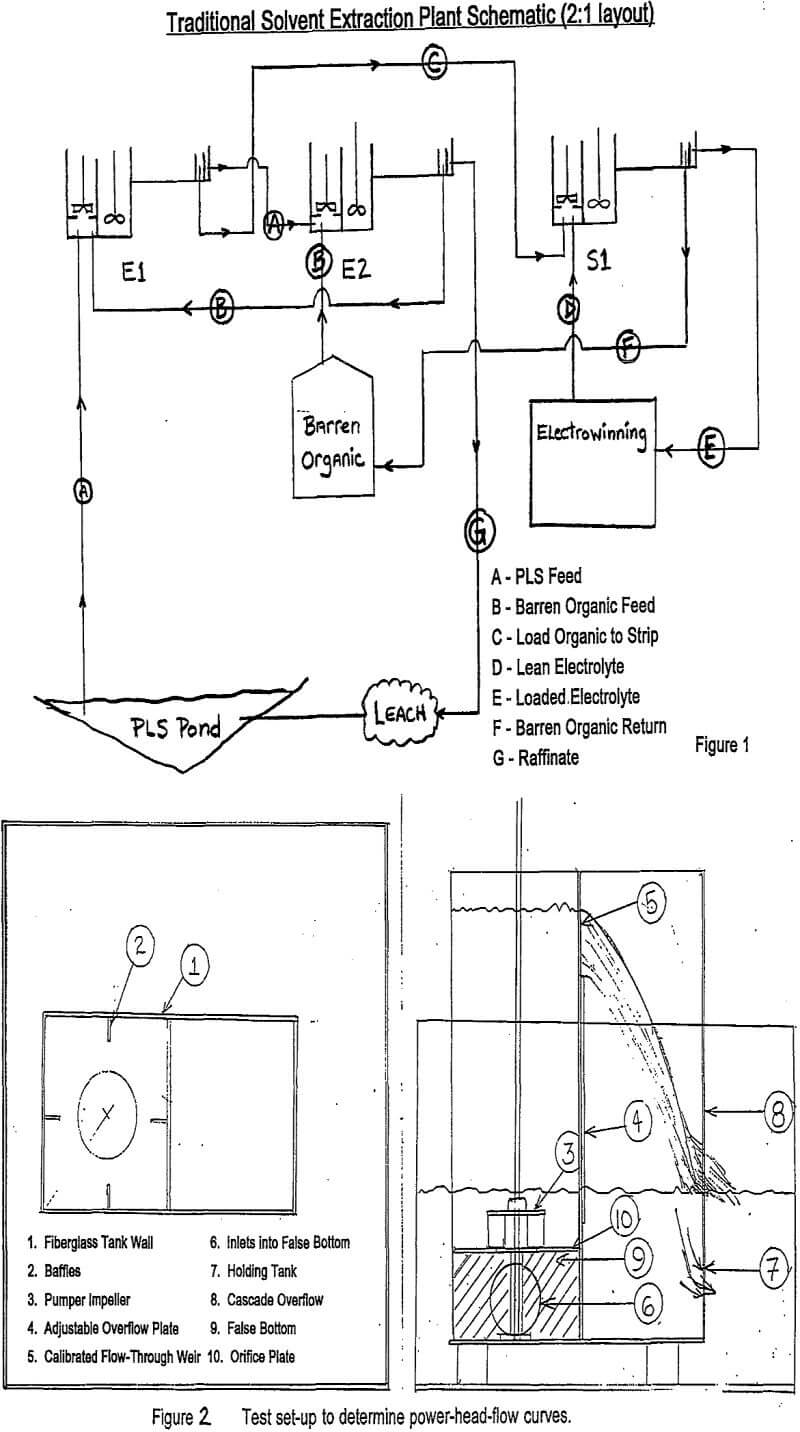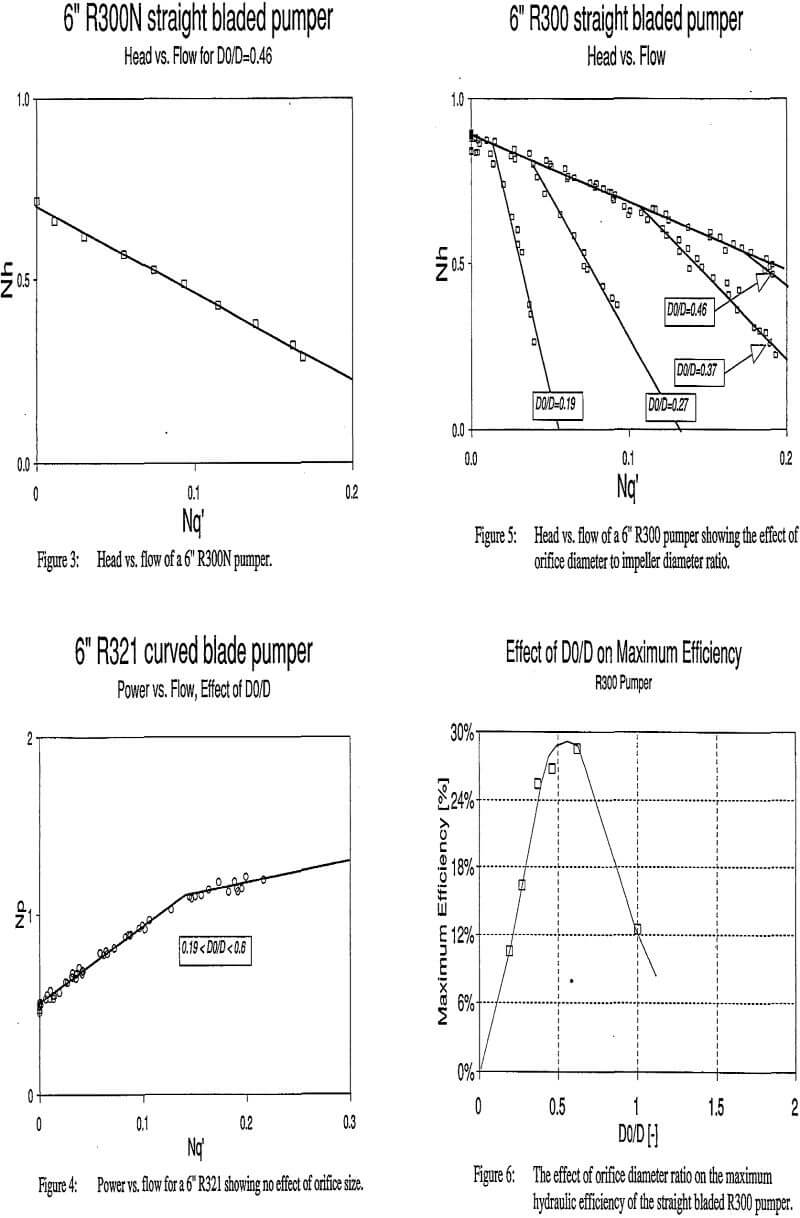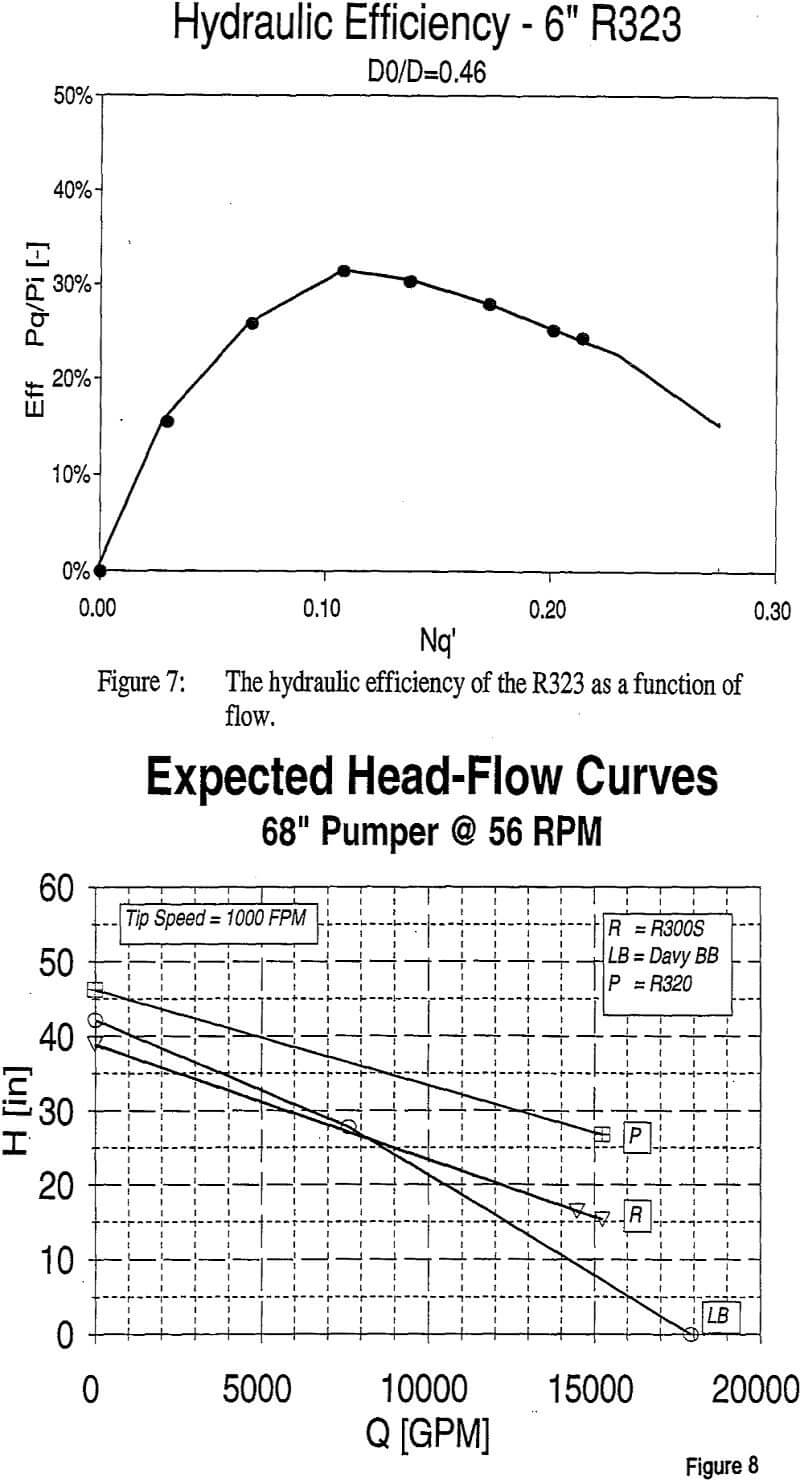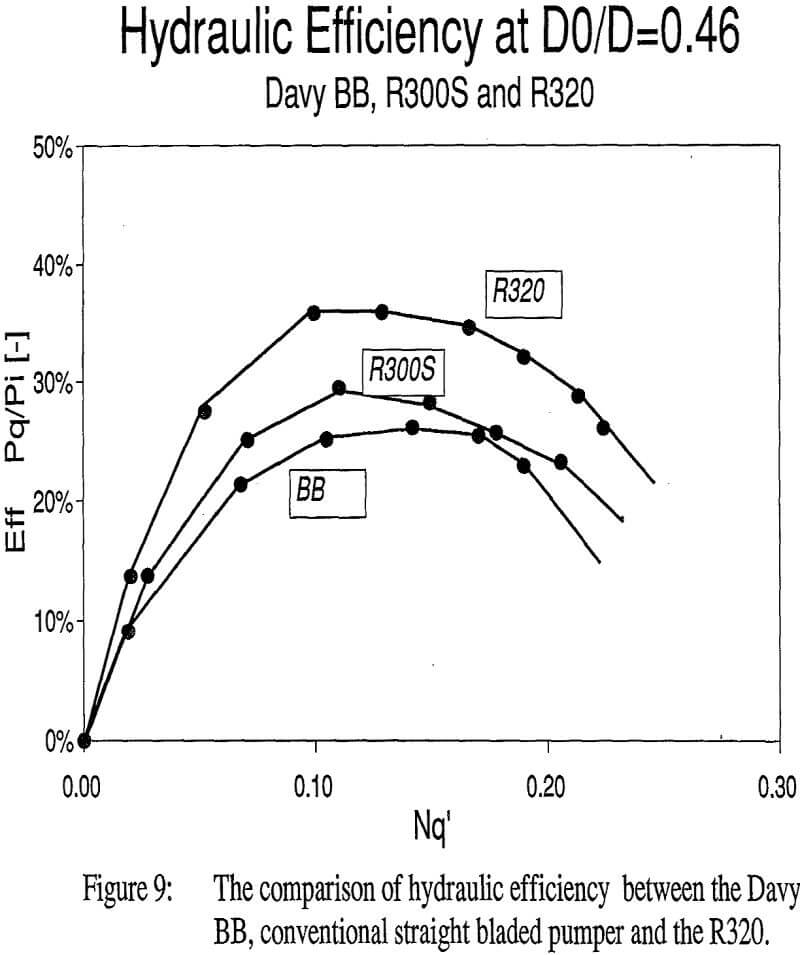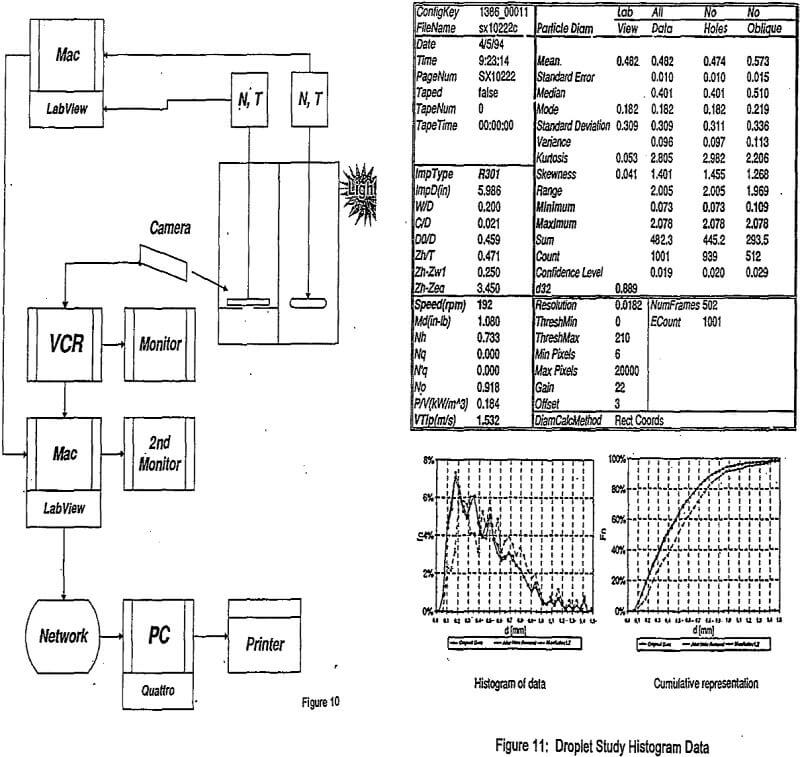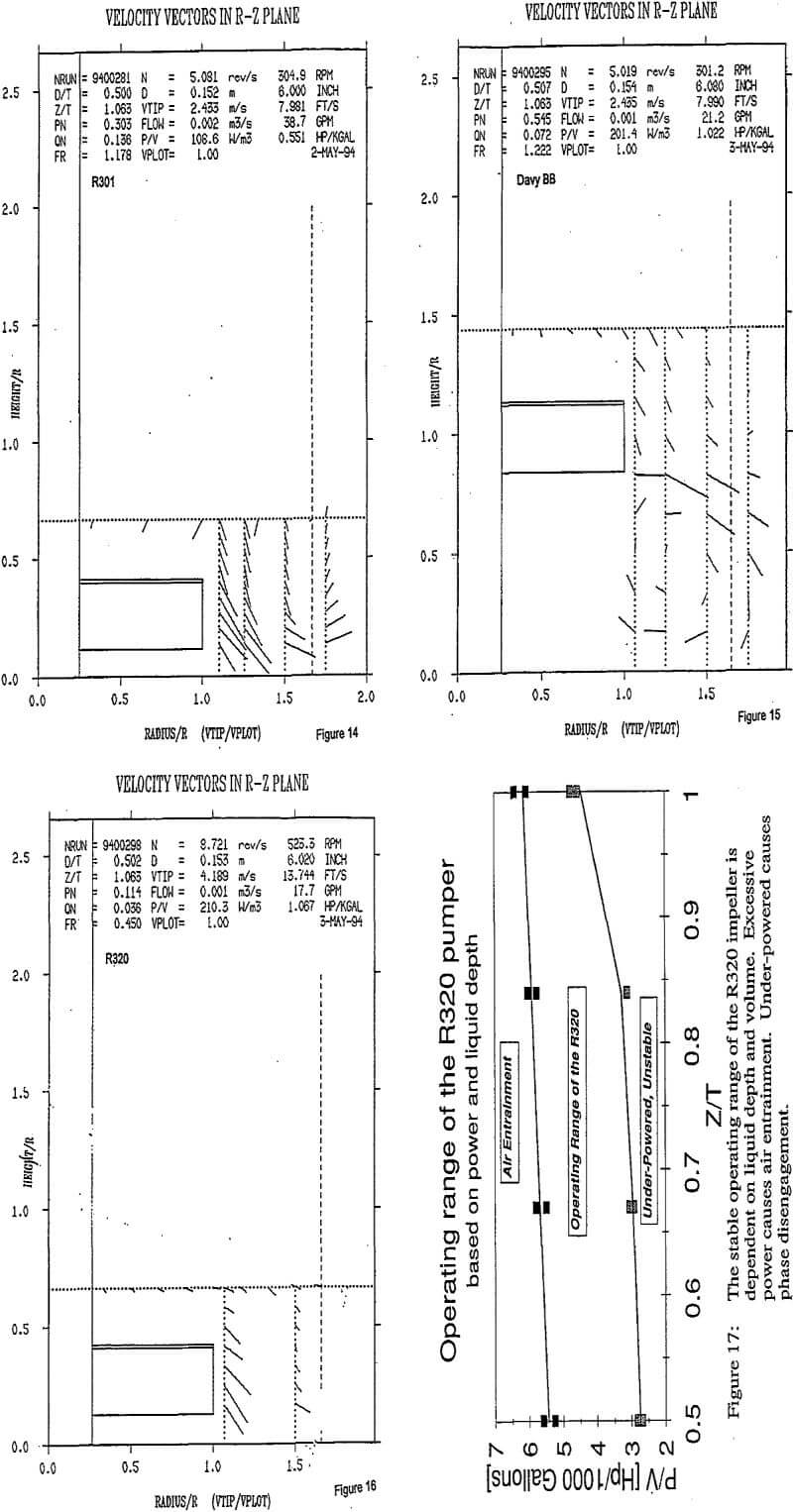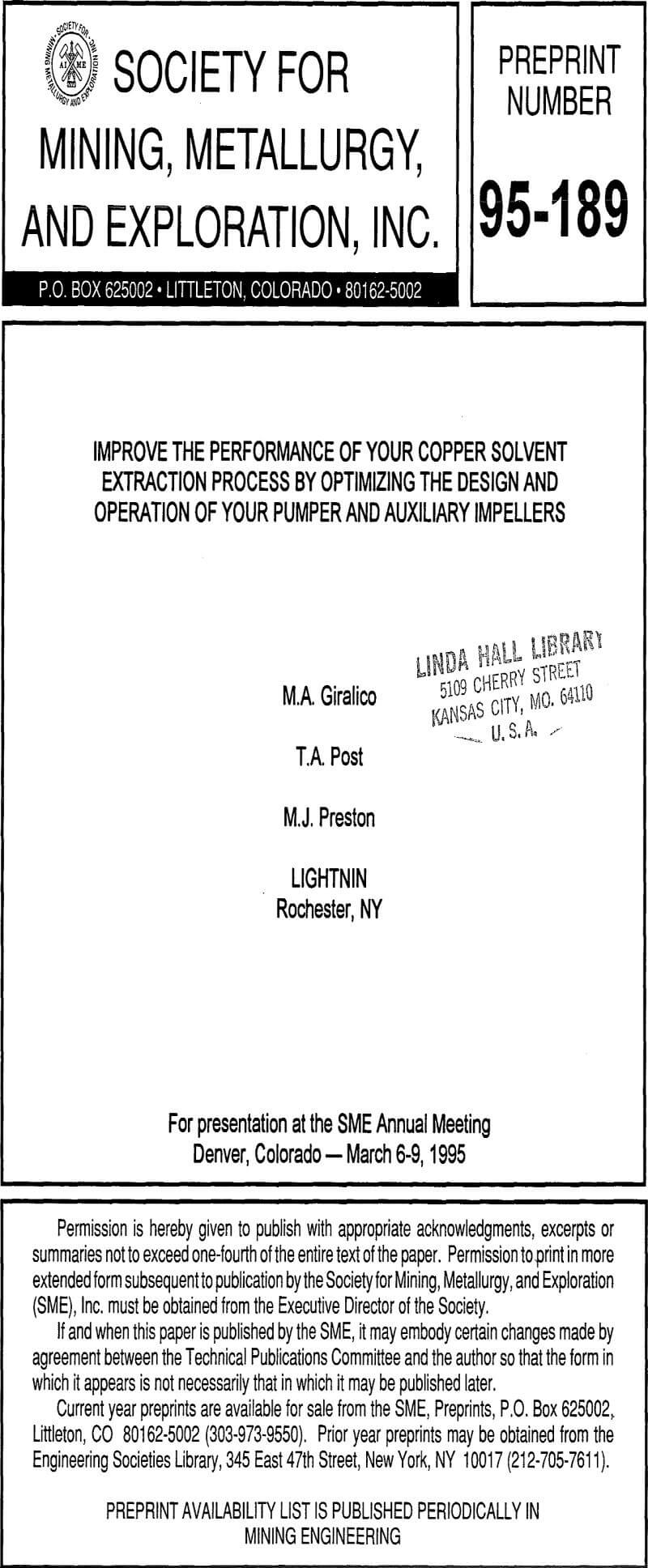Table of Contents
LIGHTNIN pioneered impeller developments in the early 1980’s that allowed axial flow impellers (A310) in the auxiliary mix boxes of SX plants to reduce shear and entrainment while providing good contacting of the aqueous and organic phases. However, the mixing technology of the primary pumper has not changed since its introduction. LIGHTNIN has studied the primary mixer operation by specifically focusing on mixing fundamentals in order to improve and optimize primary impeller design while maintaining the traditional system configuration.
R320 Development Research Philosophy
This research focused on the specific goals of improving hydraulic efficiency and reducing entrainment losses. Efficiency increases allow smaller impeller diameters, lower tip speeds, and decreased power consumption than conventional designs. This translates directly into both capital and operating cost savings. The study to define the correct blade profile also sought to develop an impeller with better (i.e. smaller) shear and turbulence components to minimize fine droplets and thus entrainment losses. With our expertise in mixing technology, we were confident of achieving the above goals by creating a superior pumper impeller which outperforms all current available technologies.
Head-Flow Optimization
Power dissipation was determined using a torque cell and RPM readout. The head, flow, and power performance for each impeller design was characterized using appropriate dimensionless groups for continuity and ease of comparison.

Nq = Q/ND³………………………………………………………………….(2)
Np = P/ρ N³D5………………………………………………………………(3)
Furthermore, hydraulic power is defined as:
Phyd = ρgH…………………………………………………………………….(4)
Hydraulic efficiency can be determined by combining Equations 3 and 4.
Efficiency = Phyd/P x 100%……………………………………………….(5)
The R320 impeller produces much higher efficiencies than either the R300S or Davy BB impeller. This increased hydraulic efficiency, while contributing to better head and flow performance, becomes profoundly more important when correlated with the impeller’s ability to affect droplet distribution.
Droplet Characterization
A very low concentration of organic phase (1%) was used with water in order to study just the effect of impeller design on droplet breakup. This method produced smaller absolute droplet sizes than a 50/50 dispersion did but was instrumental in obtaining accurate comparisons of impeller generated droplet distributions.
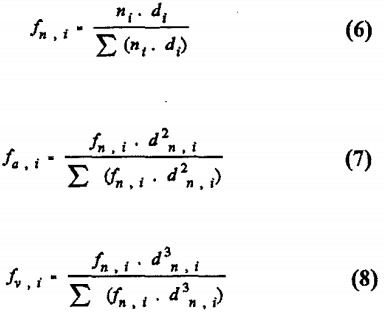
Shear Gradients
To better understand both traditional and R320 performance, these impellers were studied by Laser Doppler Velocimetry. Since shear is defined as
γ = dv/dx………………………………………………………..(9)
large velocity gradients are clear indications of excessive shear and recirculation that contributes to droplet breakup, entrainment and reduced hydraulic efficiency. Both R301 and Davy BB also show a great degree of recirculating flow that would pass through this high fluid shear zone repeatedly. This effect will continuously reduce droplet size, increase separation times, and raise entrainment. It also throttles the flow-generating-capabilities of the inefficient traditional designs.
50:50 Dispersions
Through our research, information from Davy McKee, and conversations with Zeneca AG, maintaining a stable dispersion was considered necessary for eliminating mass transfer limitations. Results on stable dispersion testing is shown in Figure 17 for the R320. The power level for maintaining a stable dispersion varied depending on liquid depth from 2¼ to 4 horsepower per 1000 gallons. This figure further demonstrates that excessive energy input beyond this limit is the major contributing factor to air entrainment. Air entrainment is recognized by industry experts as a major cause of crud formation and enhanced entrainment losses. It was the opinion of Zeneca that the power required for a stable dispersion exceeds that required for mass transfer based on the rapid kinetics of extractant chemistry.
Full Scale Verification
Optimizing Design & Operation of your Pumper and Auxiliary Impellers
The R321 produced acceptable process performance while lowering average organic in aqueous entrainments by 55 percent to an average level of 5 ppm over the life of the test. Aqueous in organic values were reduced by 48 percent also in this side-by-side scientific study. The other data concerns the installation and operation of the first, full scale R320. The R320 provides equal head and flow at an 18 percent reduction in power. Furthermore, the measured entrainment values for organic in raffinate have decreased 50% from the traditional turbine. This confirms our laboratory studies in head-flow optimization, droplet characterization, shear gradient reduction, and 50:50 dispersions.
